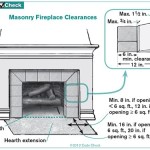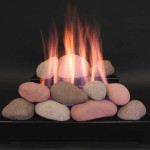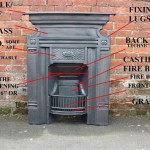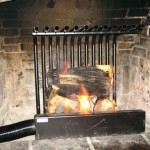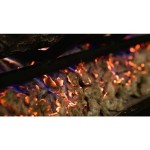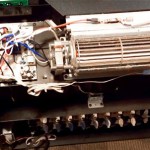How Does An Electric Fireplace Work?
Electric fireplaces offer a convenient and visually appealing alternative to traditional wood-burning or gas fireplaces. They provide supplemental heating and aesthetic ambiance without the need for venting, fuel storage, or extensive installation. Understanding how an electric fireplace operates involves examining its core components and the processes that generate heat and create the illusion of a real fire.
An electric fireplace essentially consists of three primary systems: a heating element, a flame effect generator, and a control panel. These systems work in unison to convert electrical energy into heat and a visually stimulating display.
The Heating Element: Generating Warmth
The heating element is the core component responsible for producing heat in an electric fireplace. Most electric fireplaces utilize one of two types of heating elements: resistance coils or ceramic plates. Resistance coils are similar to those found in electric space heaters or toasters. They consist of a coiled wire, typically made of nichrome, that resists the flow of electricity. As electricity passes through the coil, the resistance causes the wire to heat up, radiating warmth into the surrounding environment. A fan, typically located behind the heating element, blows air across the heated coils, distributing the warm air into the room.
Ceramic plate heaters employ a different approach. They consist of a ceramic plate embedded with a grid of conductive material. When electricity flows through the grid, the ceramic plate heats up, radiating heat. Ceramic heaters are often considered more efficient and longer-lasting than resistance coil heaters. They also tend to produce a more consistent and even heat distribution. In either case, a thermostat allows users to regulate the temperature output and maintain a desired level of warmth in the room. A safety override is also included to prevent overheating, automatically shutting off the unit if temperatures exceed safe limits.
The wattage of the heating element significantly impacts the heating capacity of the electric fireplace. Higher wattage units can heat larger spaces more effectively. It's important to consider the size of the room you intend to heat when selecting an electric fireplace to ensure adequate heating performance. Most electric fireplaces offer multiple heat settings, allowing users to adjust the heat output according to their needs and preferences. The ability to operate the flame effect independently of the heating element is a common feature, enabling users to enjoy the ambiance of the fireplace without generating heat during warmer months.
The Flame Effect Generator: Creating the Illusion
The flame effect generator is perhaps the most visually striking aspect of an electric fireplace. It creates the illusion of a realistic fire without the dangers or inconveniences associated with real flames. While the specific technology used can vary among different models, the fundamental principle remains the same: projecting light onto a surface to simulate the flickering flames and glowing embers of a fire.
Older models often used a combination of rotating reflectors, mirrors, and colored filters to create a flickering effect. A light source, usually an incandescent bulb or halogen lamp, shines onto a rotating reflector. The reflector is designed with uneven surfaces that scatter and direct the light in a dynamic pattern. Mirrors positioned around the reflector further amplify and distribute the light. Colored filters, typically orange, red, and yellow, are used to tint the light and mimic the colors of a real flame. The resulting projected light pattern is then displayed onto a screen or back panel, creating the illusion of flickering flames.
Modern electric fireplaces increasingly utilize LED technology for flame effects. LEDs offer several advantages over traditional light sources, including lower energy consumption, longer lifespan, and greater flexibility in creating dynamic lighting effects. LED-based flame effects typically involve an array of LEDs arranged behind a semi-transparent screen. The LEDs are programmed to vary in brightness and color intensity, creating a realistic flickering and dancing flame effect. Some advanced models incorporate multiple layers of LEDs and sophisticated algorithms to generate even more realistic and complex flame patterns. These algorithms can simulate the random and unpredictable nature of real flames, enhancing the overall visual experience.
Many electric fireplaces also include simulated embers or logs to further enhance the realism of the flame effect. These simulated embers are often made of translucent plastic or resin and are illuminated from below by LEDs. The combination of flickering flames and glowing embers creates a convincing visual representation of a traditional fireplace. The brightness and color of the flame effect are often adjustable, allowing users to customize the appearance of the fire to their liking. Some models even offer a choice of different flame colors, such as blue or purple, for a more contemporary or stylized look.
The Control Panel: Managing Functionality
The control panel is the interface through which users interact with the electric fireplace. It allows them to adjust various settings, such as heat output, flame effect intensity, and timer functions. Control panels can range from simple manual controls to more sophisticated digital displays with remote control capabilities.
Basic control panels typically feature knobs or switches for adjusting the heat settings and the flame effect. A thermostat knob allows users to set the desired temperature. A separate switch controls the heating element, allowing users to turn the heat on or off independently of the flame effect. Another control adjusts the brightness or intensity of the flame effect. These simple controls provide basic functionality for adjusting the fireplace's performance.
More advanced electric fireplaces feature digital control panels with LCD displays and remote controls. These control panels offer a wider range of features and customization options. A digital thermostat allows for precise temperature control. A timer function allows users to set the fireplace to turn on or off automatically at specific times. Some models include energy-saving features, such as automatic shut-off when the desired temperature is reached. The remote control provides convenient access to all the control panel functions, allowing users to adjust the settings from across the room.
Smart electric fireplaces can even be controlled through mobile apps or voice assistants. These models connect to a home Wi-Fi network and allow users to adjust the settings remotely using their smartphones or tablets. They can also be integrated with smart home systems, allowing for voice control through devices like Amazon Echo or Google Home. This level of integration provides unparalleled convenience and control over the electric fireplace's operation.
The safety features of the control panel are also crucial. Most electric fireplaces include a built-in overheat protection system that automatically shuts off the unit if it detects excessive temperatures. This safety feature prevents potential hazards and ensures the safe operation of the fireplace. Some models also feature a child lock function that prevents unauthorized access to the control panel settings.
In summary, an electric fireplace uses a combination of a heating element for warmth, a flame effect generator for visual appeal, and a control panel for functionality. The heating element, whether resistance coil or ceramic plate, converts electrical energy into heat, which is then distributed by a fan. The flame effect generator creates the illusion of a realistic fire using various techniques, including rotating reflectors, mirrors, and LED technology. The control panel allows users to adjust the settings and manage the fireplace's operation, often with advanced features like digital thermostats, timers, and remote control capabilities. The interplay of these three components allows electric fireplaces to offer a convenient and versatile alternative to traditional fireplaces.

How An Electric Fireplace Works

How Do Electric Fireplaces Work Home Inspection Geeks

How Does An Electric Fireplace Work Dbs Inc Az

How Do Electric Fireplaces Work Home Inspection Geeks

Realistic Electric Fireplace Modern Flames
How Do Electric Fireplaces Work Heating Era Quora

How An Electric Fireplace Works

How Does An Electric Fireplace Work Mr

Do Electric Fireplaces Really Work
Why Electric Fireplaces Are Hot Howstuffworks

